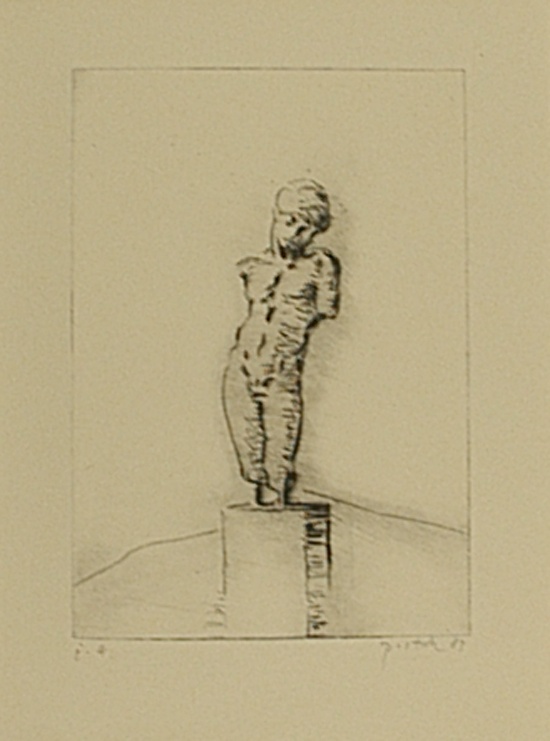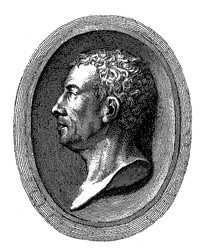Die Radierung dürfte auf die Zeichnung von Manfred Pietsch, WM-VI-b-h-413, zurückgehen. Sie zeigt die bekannte Statue des sog. Narcissus in der Antikensammlung Berlin (Inv.-Nr. Sk 223). Von der Figur, ein nackter Jüngling, sind die Arme und die Beine unterhalb der Knie verloren. Der Kopf ist leicht zur Seite geneigt. Er steht auf einem kubischen Sockel. Es handelt sich um die um 410-400 v. Chr. entstandene Darstellung eines Epheben aus dem Kreis des griechischen Bildhauers Polyklet.
Sig./dat.: r.u. Pietsch 83
Bez.: l.u. E.A.
en

